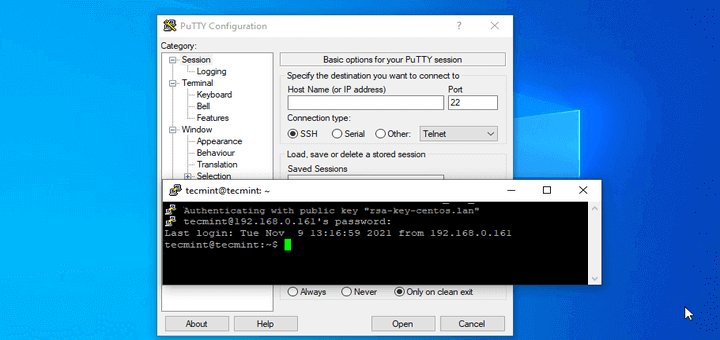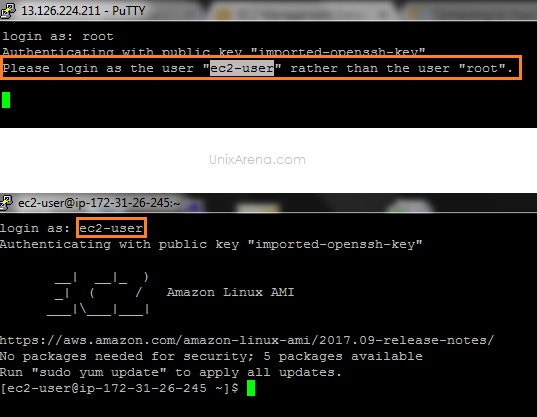

#PUTTY SSH SESSION WINDOWS#
Since this is a command-line only utility (Without GUI), you should first launch your Windows command prompt.įor this, click on start menu on your windows, and type “cmd.exe” in the search box and press enter, this will launch the Windows command prompt.Īlso, depending on where you have downloaded the plink.exe, you may have to modify the Windows’s PATH variable accordingly. You can’t just double-click on plink.exe to launch it.
#PUTTY SSH SESSION DOWNLOAD#
If you have a 32-bit Windows laptop, make sure you download the 32-bit version of plink. If you don’t have PuTTY already installed on your machine, make sure you also download putty executable along with plink. Plink -batch option for Windows Batch Filesįirst, download plink executable from here.Additional Enable and Disable Options for Plink SSH.Use Private Key File for Authentication with Plink.Execute Multiple Linux Commands from a Windows File.Plink Non-Interactive SSH Session to execute a Remote Command.In this tutorial, we’ll discuss the following: Use Plink for non-interactive SSH session to execute remote linux commands for automation purpose from your Windows.Use PuTTY for interactive SSH session from your Windows to Linux Servers.nf on the web for many good customizations to get you started.Plink is a companion command-line utility for PuTTY. So my recommendation would be tmux.Īlso search for "dotfiles", in particular nf and.
#PUTTY SSH SESSION INSTALL#
apt-get install tmuxīyobu is a nice frontend to both terminal multiplexers, but tmux is so comfortable that in my opinion it obsoletes byobu to a large extent. Now you get "tabs" in the form of windows and panes inside GNU screen and tmux. And not to forget, terminal multiplexers overcome one of the big disadvantages of PuTTY: no tabbed interface. The possibilities are manifold and it's a true productivity booster. So you can connect to the same session from another machine (e.g.

And that works across different machines. This way even if you get forcibly disconnected - let's face it, a power outage or network interruption can always happen - you can always resume your work where you left.

Set up byobu (or even just tmux alone as it's superior to GNU screen) and always log in and attach to a preexisting session (that's GNU screen and tmux terminology). In addition I would strongly recommend that you do something else entirely. Bash (usually the default shell on Ubuntu) has a value TMOUT which governs (decimal value in seconds) after which time an idle shell session will time out and the user will be logged out, leading to a disconnect in an SSH session. In addition to the answer from "das Keks" there is at least one other aspect that can affect this behavior.


 0 kommentar(er)
0 kommentar(er)
